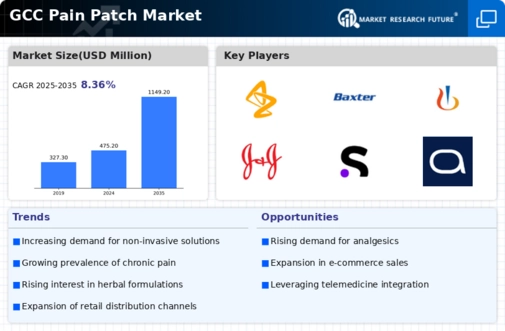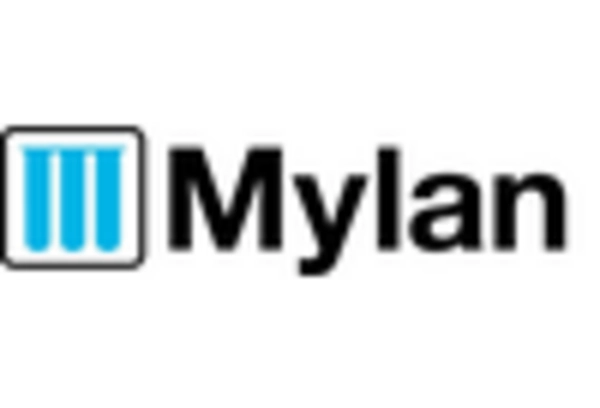Growing Aging Population
The aging population in the GCC is a crucial driver for the pain patch market. As individuals age, they often experience an increase in chronic pain conditions, such as arthritis and neuropathy. This demographic shift is leading to a higher demand for effective pain management solutions. The pain patch market is well-positioned to cater to this growing segment, as these products offer a user-friendly and effective means of pain relief. Projections indicate that the elderly population in the GCC will increase by 50% by 2030, suggesting a substantial market opportunity for pain patches tailored to the needs of older adults.
Shift Towards Home Healthcare
The trend towards home healthcare in the GCC region is reshaping the pain patch market. With a growing emphasis on patient-centered care, many individuals prefer managing their pain at home rather than frequenting healthcare facilities. This shift is driven by factors such as convenience, cost-effectiveness, and the desire for privacy. The pain patch market benefits from this trend, as these products are designed for easy application and can be used in the comfort of one's home. Market data indicates that the home healthcare segment is projected to grow at a CAGR of 10% over the next five years, further solidifying the role of pain patches as a preferred choice for pain management.
Expansion of E-commerce Platforms
The expansion of e-commerce platforms in the GCC is transforming the pain patch market landscape. With the rise of online shopping, consumers now have greater access to a variety of pain management products, including pain patches. This shift not only enhances convenience but also allows for competitive pricing and a wider selection of brands. Market data indicates that online sales of healthcare products are expected to grow by 15% annually, indicating a robust opportunity for pain patch manufacturers to reach a broader audience. As e-commerce continues to flourish, it is likely to play a pivotal role in the growth of the pain patch market.
Increasing Prevalence of Chronic Pain
The rising incidence of chronic pain conditions in the GCC region is a primary driver for the pain patch market. According to health statistics, approximately 30% of the adult population in GCC countries experiences chronic pain, which significantly impacts their quality of life. This growing prevalence necessitates effective pain management solutions, leading to an increased demand for pain patches. The convenience and ease of use associated with these patches make them an attractive option for patients seeking relief without the need for invasive procedures. As healthcare providers increasingly recognize the importance of addressing chronic pain, the pain patch market is likely to expand, catering to a demographic that is actively seeking non-invasive alternatives.
Rising Awareness of Pain Management Options
Increased awareness regarding various pain management options is significantly influencing the pain patch market in the GCC. Educational campaigns and healthcare initiatives have led to a better understanding of chronic pain and its treatment modalities. As patients become more informed about the benefits of pain patches, including their targeted delivery and reduced side effects compared to oral medications, the demand for these products is expected to rise. Market Research Future suggests that awareness initiatives could potentially increase the adoption rate of pain patches by up to 25% in the coming years, thereby expanding the market further.

















Leave a Comment